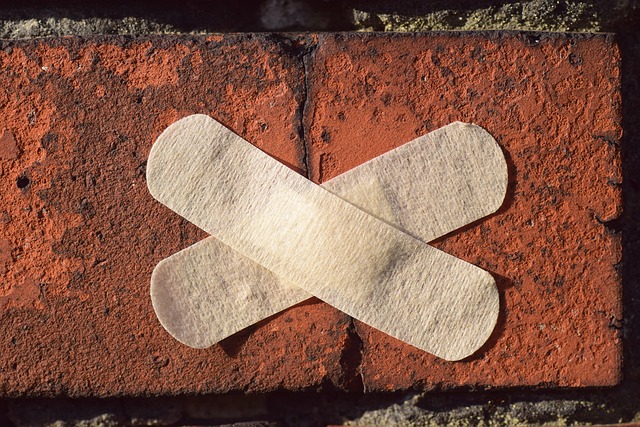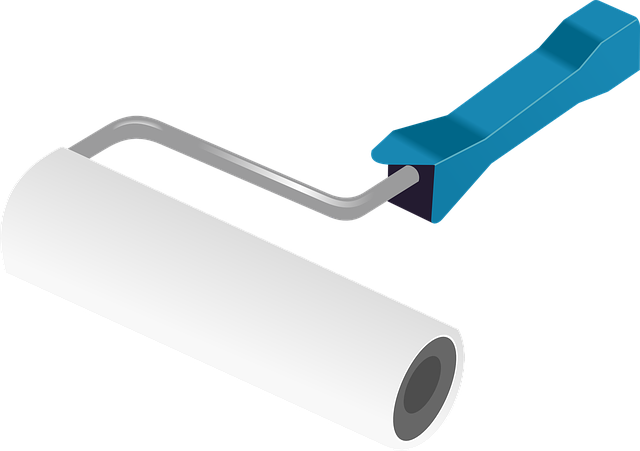Foundation cracks, caused by differential settling and soil movement, signal structural issues. Various crack types require specific attention, with stem wall repair addressing horizontal/diagonal cracks at their source. Stem walls are critical for foundation integrity, and their maintenance is key to preventing long-term damage. Regular visual inspections, using non-invasive methods like thermal imaging or GPR, can detect early signs of trouble. DIY repairs are suitable for minor cracks, but wider or active cracks necessitate professional stem wall repair services. Techniques include hydraulic cement injection and carbon fiber wraps, with more severe cases employing steel braces or epoxy injections. Post-repair care involves proper drainage management, regular inspections, and proactive measures to safeguard foundation integrity. Regular maintenance, including inspection and addressing settling issues promptly, is vital for preventing structural damage.
Foundation cracks can be a significant concern for any homeowner, indicating potential structural issues. This article guides you through the intricacies of foundation crack inspection, offering insights into causes, types, and the crucial role of stem walls in maintaining structural integrity. Learn visual inspection tips, explore non-invasive assessment techniques, and discover when professional help is needed. Additionally, we cover common repair methods, post-repair care, and preventative measures to ensure a solid foundation, with a focus on effective stem wall repair strategies.
Understanding Foundation Cracks: Causes and Types

Foundation cracks can be a significant concern for homeowners, indicating potential structural issues within the home’s underpinnings. These cracks often arise due to various factors, such as differential settling, soil movement, or changes in temperature and humidity levels over time. Understanding the causes is essential when considering effective solutions like stem wall repair.
There are several types of foundation cracks, each with its own characteristics: vertical cracks, horizontal cracks, diagonal cracks, and bulging or bowing walls. Vertical cracks typically result from differential settling, while horizontal cracks often signal soil movement or expansive clay soils. Diagonal cracks can be caused by both settlement and soil issues. Stem wall repair is particularly relevant for horizontal or diagonal cracks, as it addresses the underlying structural problems that lead to these types of foundation failures.
The Role of Stem Walls in Structural Integrity

Stem walls play a crucial role in maintaining the structural integrity of a foundation, acting as a vital support system that prevents cracks from forming or expanding. These walls are an essential component, especially in areas prone to seismic activity or ground movement, as they provide stability and resistance against external forces. When properly constructed and maintained, stem walls can last for decades, ensuring the overall longevity of the foundation.
However, over time, these walls may require attention due to various factors like settling, shifting soil, or poor construction. Cracks in stem walls are not just cosmetic issues; they signal potential structural problems that demand immediate attention. Prompt inspection and timely Stem Wall Repair can prevent further damage, ensuring the house remains secure and stable for years to come.
Identifying Signs of Damage: Visual Inspection Tips

When conducting a visual inspection for foundation cracks, pay close attention to signs of damage that might indicate deeper issues. Look for any visible gaps or separations along the foundation walls, floors, and ceilings. These can be early indicators of structural problems. Cracks in concrete or masonry work, especially those wider than a finger’s width, warrant further investigation as they may suggest stem wall repair needs.
During your inspection, check for bulging or uneven surfaces, which could signal underlying soil settlement or moisture intrusion. Also, observe any signs of water damage, like mold or mildew growth, as these can be red flags for foundation problems. Regularly inspect areas prone to shifting, such as near trees or bodies of water, as these elements can exert pressure on your home’s foundation.
Non-Invasive Crack Assessment Techniques

Non-Invasive Crack Assessment Techniques play a crucial role in evaluating foundation cracks without causing further damage or disruption to the structure. These advanced methods offer a less intrusive approach compared to traditional invasive assessments, making them ideal for regular maintenance and monitoring. One such technique is thermal imaging, which detects temperature variations along the foundation walls, helping identify potential crack patterns and severity.
Another effective method is ground-penetrating radar (GPR), capable of generating detailed images of underground structures. GPR sends electromagnetic waves into the soil and measures their reflections, revealing the depth and width of cracks in stem wall repairs. This non-destructive testing ensures that any issues are identified early on, allowing for prompt and targeted remediation without compromising the integrity of the foundation.
When to Consider Professional Help for Repair

If cracks in your foundation are minor and only cosmetic, you might be able to address them with some DIY methods or simple repairs. However, if the cracks are wider than 1/8th inch (3 mm), involve uneven walls, or show signs of ongoing movement, it’s time to consider professional help. Stem wall repair is a specialized service that deals with these complex issues.
Professional foundation inspectors can identify the root cause of the problem, whether it’s due to poor initial construction, soil settlement, or other structural issues. They will also assess if the cracks are just cosmetic or indicative of more severe damage that requires immediate attention. Prompt action is crucial; neglecting stem wall repairs can lead to further deterioration and costlier fixes down the line.
Common Methods for Stem Wall Repair

Stem Wall Repair is a critical aspect of foundation crack inspection and remediation. One common method involves using hydraulic cement, which is injected into the cracks to fill them from the inside out. This technique not only stops further damage but also provides structural support to the stem wall. Another widely adopted approach is the use of carbon fiber wraps, which are applied externally to reinforce the existing structure. These wraps are strong and flexible, making them ideal for mitigating stress and preventing new cracks from forming.
For larger or more complex cracks, a combination of methods may be employed. This could include installing steel braces or mesh to enhance structural integrity followed by hydraulic cement injections. Stem Wall Repair experts might also recommend the use of specialized foams or epoxy injections to fill hard-to-reach areas and ensure long-lasting repairs. Each method offers unique advantages, and the choice depends on the extent of damage, accessibility, and the specific needs of the stem wall.
Ensuring Long-Lasting Results: Post-Repair Care

After a successful foundation crack inspection and repair, ensuring long-lasting results is paramount. Stem wall repair, a critical component of this process, requires meticulous care to avoid future issues. It’s essential to maintain proper drainage around the structure, preventing water from pooling near the foundation, which could compromise the repair. Regularly inspecting and cleaning drainage systems, such as gutters and downspouts, is crucial. Additionally, applying a waterproof barrier on the repaired area can provide an extra layer of protection against moisture intrusion.
Post-repair care also involves monitoring the crack for any signs of re-emergence. Regular visual inspections help identify potential issues early on. Using appropriate tools to measure the crack’s width periodically ensures that it remains within acceptable limits. Addressing any new cracks promptly prevents them from growing and causing further damage. This proactive approach guarantees the structural integrity of your foundation, ensuring a lasting solution for years to come.
Preventative Measures: Maintaining a Solid Foundation

Preventative measures are crucial in maintaining a solid foundation and preventing future cracks. Regular inspection is the first step; it allows for early detection of any issues, including small cracks that could indicate larger structural problems. Once identified, these should be addressed promptly by professionals who can perform stem wall repair if necessary.
Proper maintenance includes keeping the area around the foundation free from excess moisture and ensuring proper drainage. Trees and plants should be placed far enough away to avoid root systems that might disrupt the foundation over time. Additionally, monitoring settling issues and addressing them immediately can significantly contribute to long-term stability, preventing minor cracks from becoming major structural damage.
